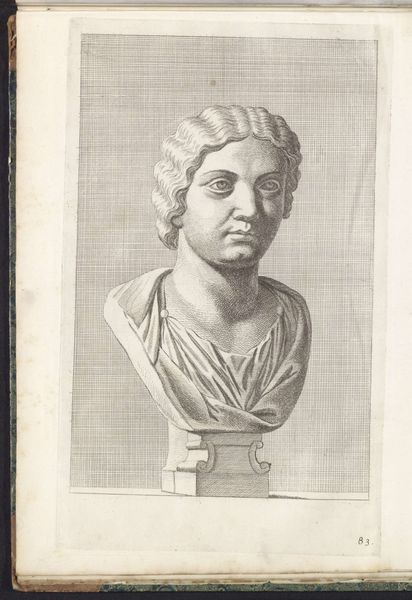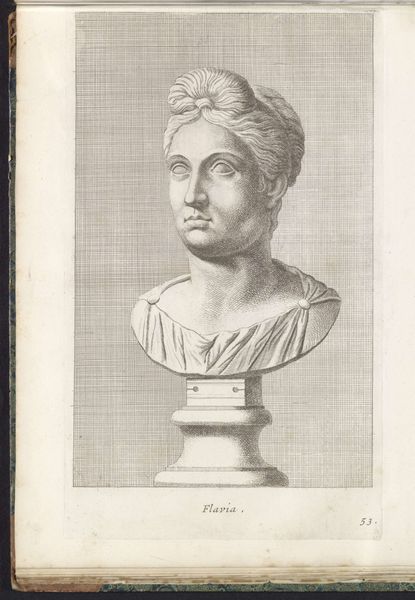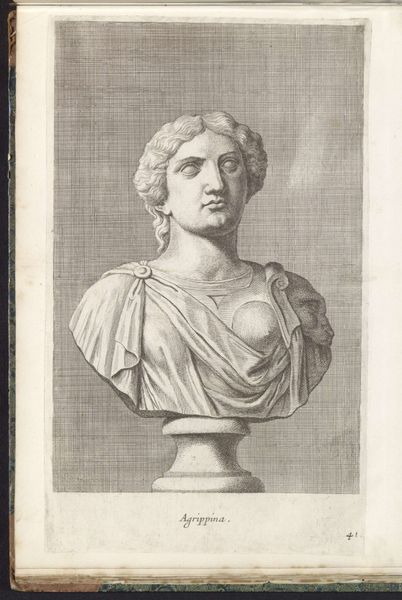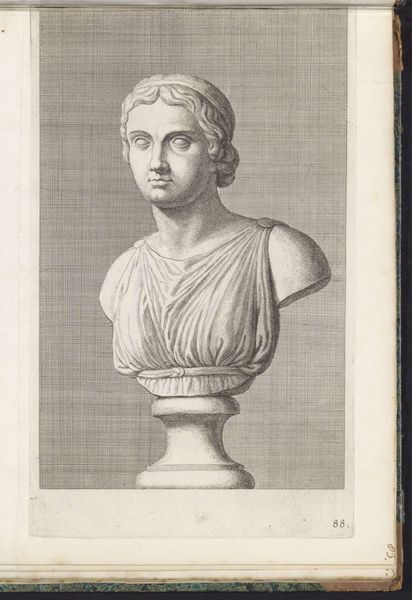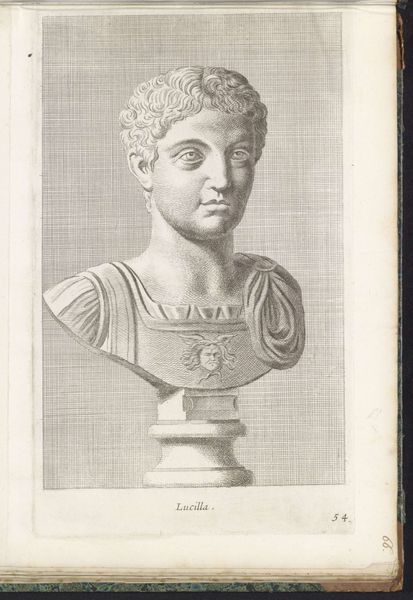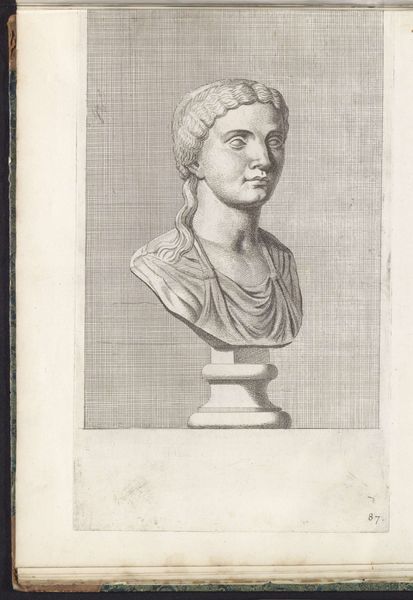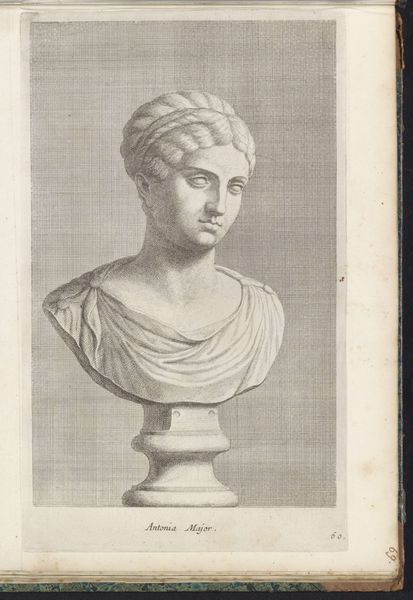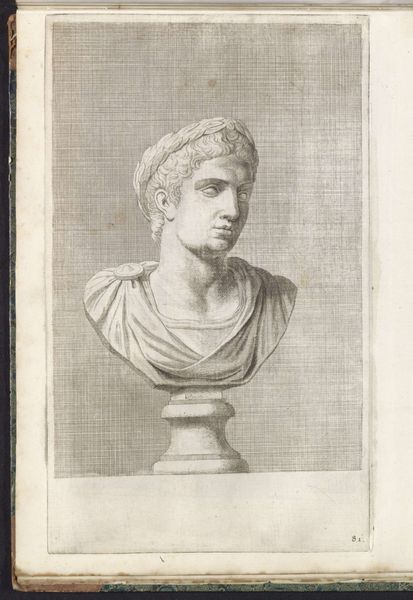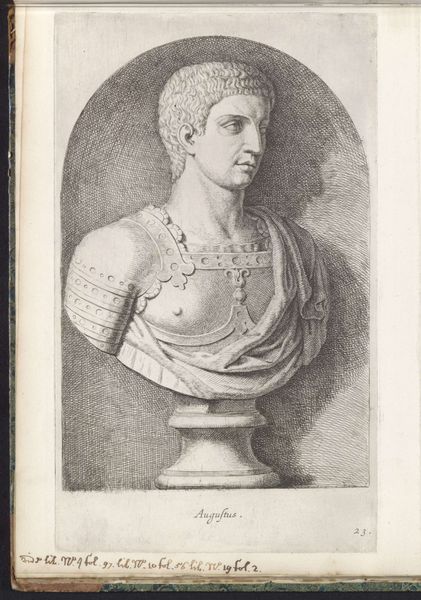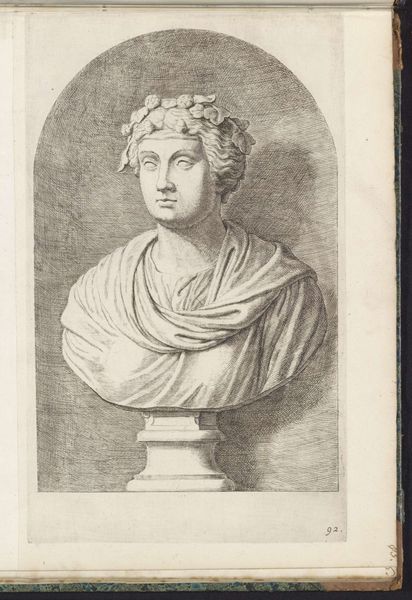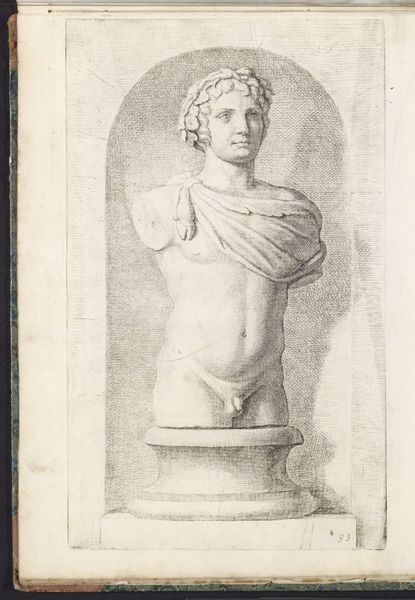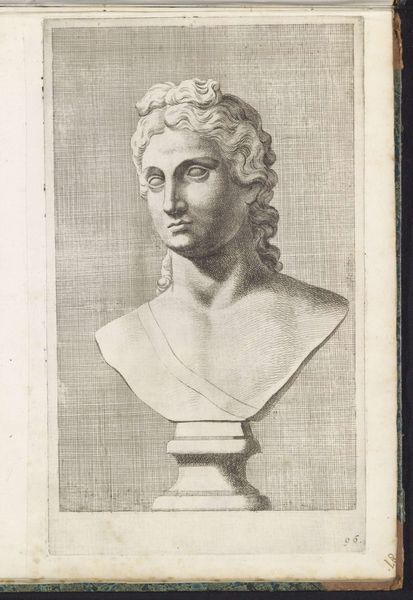
drawing, sculpture, engraving
#
portrait
#
drawing
#
baroque
#
sculpture
#
geometric
#
sculpture
#
portrait drawing
#
engraving
#
portrait art
Dimensions: height 327 mm, width 195 mm
Copyright: Rijks Museum: Open Domain
Curator: Looking at this image, what leaps out at you? For me, it's almost monumental, yet fragile. Editor: Yes! My immediate feeling is "stately and austere." But at the same time, something about the texture of the hair... it softens the effect, keeps it from feeling too cold. Tell me more about the work itself? Curator: Well, here we have an engraving dating back to sometime between 1646 and 1670. It’s called “Bust of a Woman with an Elaborate Hairstyle,” and the artist was Hubert Quellinus. It’s part of the Rijksmuseum collection. Editor: Quellinus... a Flemish name! It certainly echoes classical sculpture, doesn’t it? The draped fabric, the stylized hair...it's almost theatrical in its classicism. One wonders what sort of social role portraiture like this had at the time. Were they emulating antiquity to convey prestige, authority? Curator: Absolutely. There's an element of status, for sure. But it also plays with ideas of ideal beauty and perhaps even mortality. An engraving of a sculpture—it's a copy of a copy, in a way, removing the human element. A simulacrum, you might say. The woman, now twice removed from real life, has almost become an idea, a myth. Editor: So, the power lies not just in commemorating an individual but also in associating them with an enduring, timeless ideal. It strikes me, looking closer, how much work went into creating this. Every tiny stroke builds to this complete image, and makes you feel its volume. And its permanence. Curator: Indeed. The engraver’s skill emphasizes the original sculptor’s—we are getting echoes, or even reflections, of different layers of creativity. Editor: That attention to detail—it forces me to look. To consider. Art in those times often seemed directed to certain viewers. It will probably only inspire a thoughtful attitude from me in my present day, but probably would inspire different, more effective emotions back in those days. It does suggest an interesting puzzle around period aesthetic sensibilities and its social purpose. Curator: Precisely. I think the genius here is taking something grand and sculptural and rendering it accessible in print. This makes it available, democratic almost, even while perpetuating its ideals. Editor: Looking at this, I keep imagining the silent spaces where portraits like this would have resided... the quiet gestures, the unspoken power. It all comes down to lines. Curator: It's really intriguing, the amount of effort put into what might initially strike someone as austere, you mentioned. The austerity almost acts as a blank canvas for us to project upon, centuries later. Editor: Absolutely! The art and society influencing and commenting on each other. Such details are the ones I admire about old engravings like this.
Comments
No comments
Be the first to comment and join the conversation on the ultimate creative platform.
